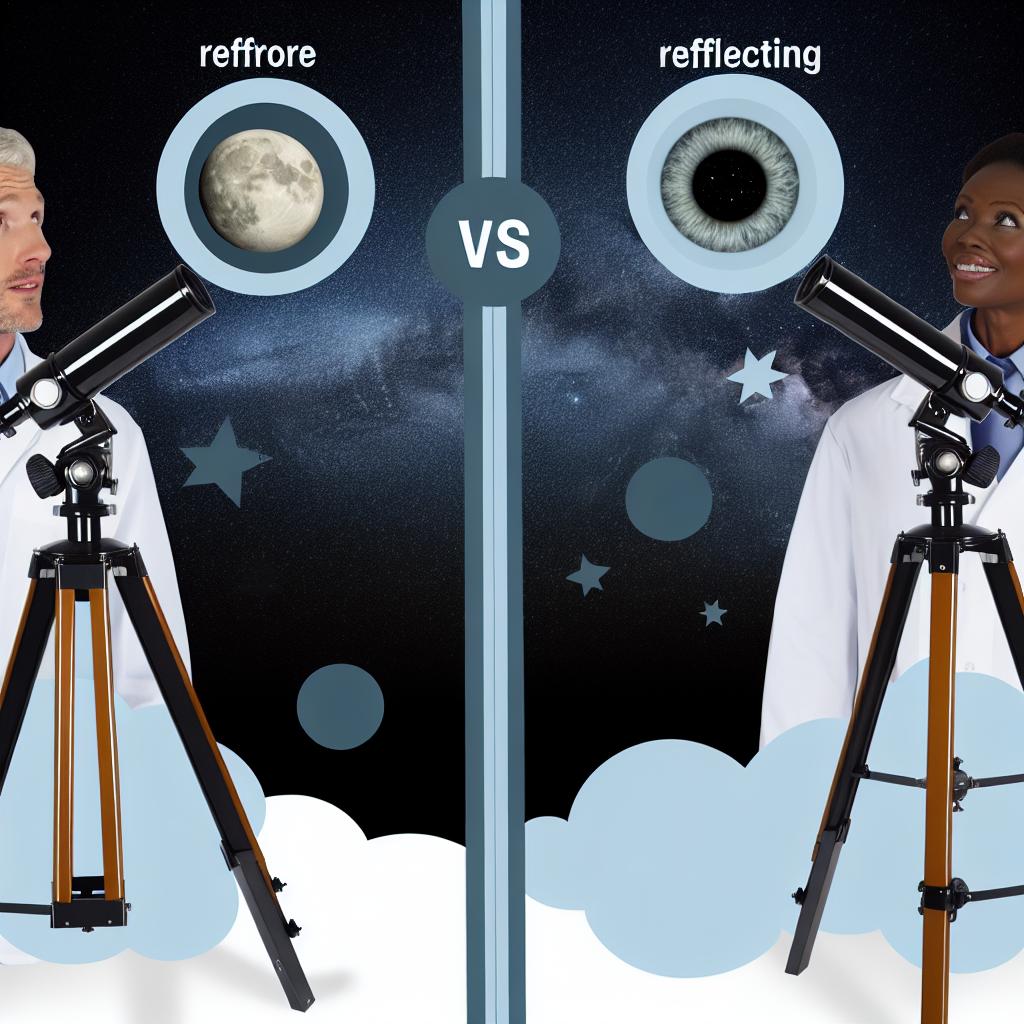Understanding Refracting and Reflecting Telescopes
When it comes to astronomical observations, the telescope is an essential tool that enables both amateurs and professionals to explore the universe. Two main types of telescopes have emerged over time: refracting telescopes and reflecting telescopes. Each has its unique characteristics and advantages, making the choice between them a matter of purpose and preference.
Refracting Telescopes: Overview and Features
Refracting telescopes, also known as refractors, utilize lenses to gather and focus light. Their design consists of a long tube with an objective lens at the front and an eyepiece at the back. This design simplicity contributes to their overall durability and low maintenance requirements.
Advantages of Refractors:
Refracting telescopes are prized for several key features. Image clarity is one of their standout characteristics. Unlike reflectors, refractors do not use a secondary mirror, eliminating any potential light scatter from such components. This enables refractors to deliver sharper and clearer images, which is particularly beneficial for observing planets and binary stars where detail is crucial.
Moreover, refractors exhibit stability and durability. The sealed optical tubes ensure that external air does not easily enter, reducing the risk of internal dust accumulation. Additionally, this design minimizes alignment issues, allowing refractors to be used over long periods without frequent maintenance. Such attributes make refractors an excellent choice for those who prefer instruments that require minimal handling and adjustment.
Limitations of Refractors:
Despite their many advantages, refracting telescopes are not without limitations. One major drawback is related to size and cost. As the diameter of the lens increases to gather more light, the cost can rise substantially. Larger lenses can be exorbitantly expensive to produce, making high-quality refractors a significant investment, particularly if they have large apertures.
Another notable limitation is chromatic aberration. This optical issue arises because lenses refract different wavelengths of light at slightly different angles, which can cause color fringes around bright objects. This phenomenon, also known as ‘purple fringing,’ can slightly reduce the quality of observations. To counteract chromatic aberration, some advanced refractors use compound lenses, known as apochromatic lenses, which are specially designed to bring multiple wavelengths of light to a single focus, thereby mitigating the color distortion.
Reflecting Telescopes: Overview and Features
Reflecting telescopes, commonly referred to as reflectors, use mirrors instead of lenses to collect light. The primary component is a concave mirror at the base of the telescope, which reflects light to a focal point. An additional flat secondary mirror directs the image to the telescope’s eyepiece on the side of the telescope.
Advantages of Reflectors:
Reflecting telescopes offer their own set of benefits, primarily due to their cost-effectiveness when aiming for larger apertures. Cost-effective larger apertures are one of the main attractions of reflectors. Producing large mirrors can be less costly compared to manufacturing large lenses, allowing for larger objective mirrors within a more accessible price range. This makes reflectors particularly appealing for individuals or institutions looking to explore deep-sky objects, where larger apertures facilitate the gathering of faint light from distant stars and galaxies.
Another significant advantage is the absence of chromatic aberration. Mirrors reflect light rather than refract it, meaning reflectors handle all wavelengths uniformly. This results in images free of the chromatic distortions that can plague refractors. As a result, reflecting telescopes deliver clear views of celestial objects without the color fringing seen in less advanced refractors.
Limitations of Reflectors:
Despite their advantages, reflective telescopes are not without challenges. One notable issue is the maintenance requirements. Reflectors often require regular cleaning to remove any dust accumulation that can affect optical performance. Furthermore, the alignment, or collimation, of the mirrors often needs periodic adjustment to ensure the telescope delivers optimal image quality.
In terms of image quality considerations, the presence of a secondary mirror can introduce diffraction effects, potentially affecting the sharpness of images. These effects stem from the obstruction and can produce recognizable patterns in observed images, perceived sometimes as a loss in definition. Additionally, the open tube design common in many reflectors leaves them more susceptible to environmental factors like dust, moisture, and temperature changes, all of which can affect performance and the necessity for constant upkeep.
Making the Right Choice
The decision between a refracting and a reflecting telescope ultimately depends on the observer’s priorities. For those seeking low maintenance and portability, refracting telescopes might be preferable. The sealed tube design and durability mean refractors can be set up quickly and require less ongoing care, which is beneficial for those with limited time or technical expertise.
On the other hand, if budget constraints and aperture size are significant factors, reflecting telescopes offer compelling advantages. Their ability to accommodate larger apertures at a relatively low cost means reflectors are especially attractive for deep-sky observation enthusiasts who want to maximize their viewing potential without incurring prohibitive expenses.
Each telescope type delivers a gateway to the wonders of the universe, allowing observers to witness celestial events and phenomena through their lenses or mirrors. As an aspiring astronomer, understanding these differences can significantly impact both the quality and the enjoyment of observations, ultimately enriching the experience of exploring our cosmos. Whether aspiring to capture the intricate details of the moon’s surface, marvel at the rings of Saturn, or glimpse far-off galaxies, the choice of telescope plays a pivotal role in the journey toward discovery.
This article was last updated on: July 5, 2025


